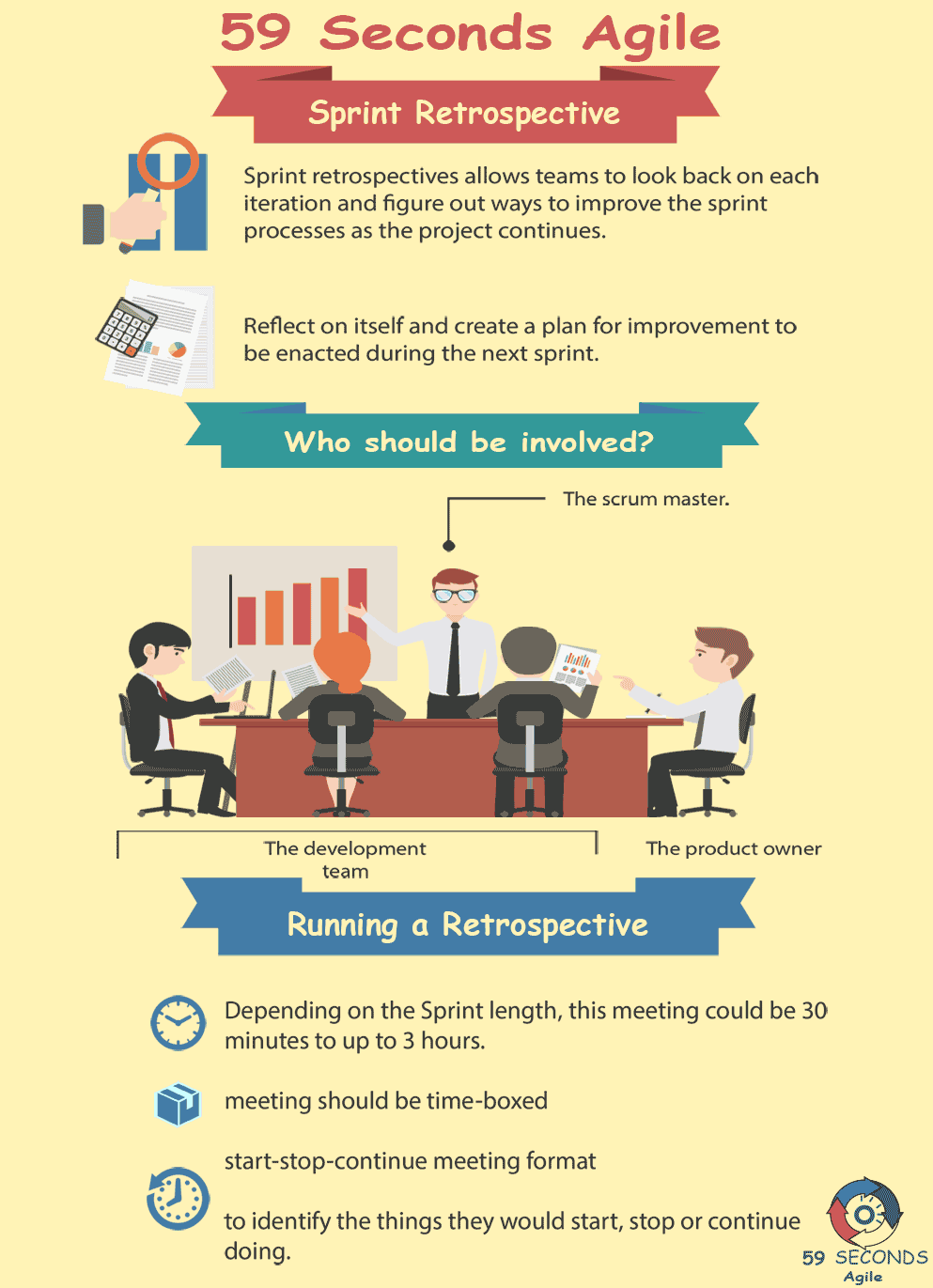
The Sprint Retrospective For Product Owners
The final step in completing a sprint within the Agile process is the Sprint Retrospective. The Retrospective marks the completion of the sprint and clears the way for the next sprint to begin.
Typically, the event is led by the by Scrum Master and attendance is required for all team members and the Product Owner. If the sprint was a month in length, then the meeting is about two-three hours in length. If the sprint was a shorter, one-to-two week in length, then the meeting is about an hour in length.
Sprint Review vs. Retrospective
First thing’s first, let’s clear up the difference between a Sprint Review and a Sprint Retrospective. The Sprint Review, if you’ll recall from our previous blog, is conducted once all items in the sprint have been completed, but is held before the sprint is considered closed. The Product Owner is in attendance is gives approval that all items have been completed based on the intended requirements. Any items not considered ‘complete’ or ‘approved’ will either cause the sprint to be extended or will be put into the next, upcoming sprint.

The Sprint Retrospective, on the other hand, marks the completion of the sprint and is held after the Sprint Review. During this event, the focus isn’t on the accuracy or completion of the tasks within the sprint, but rather on the performance of the team during the sprint.
In this meeting, the team will identify the items that they felt worked well during the sprint, such as communication or task explanation. They will then identify the items that could have been improved and come up with solutions on how to improve them going forward.
The key elements of the Sprint Retrospective include:
The identified process improvements will be incorporated into the upcoming sprints. This ensures that the team is always improving and the process is becoming tighter and leaner.
The meeting should be structured into an open forum and remain a collaborative process in which all team members have a voice and participate. There are no right or wrong opinions and everyone’s thoughts should be heard.
The focus should be on how the team can improve the overall process and general productivity going in the future.
After the meeting, the Scrum Master’s priority will be to prioritize the lessons learned and takeaway actions and then disseminates the information to all attendees.
One of the key benefits of the Retrospective is that it will help to build the team’s sense of ownership and will empower them to make decisions and participate as they continue into the next sprint.
Our Favourite Agile Books
We found these books great for finding out more information on Agile Scrum:
Upon the conclusion of the Sprint Retrospective, the Scrum Master will compile the notes into a report to be distributed to the entire team. Items identified as areas of improvement will be assigned to the team members as appropriate and the next sprint will be cleared to begin.
While most of the takeaways from this meeting will most directly impact the team members and their daily processes, there are also going to be opportunities for lessons learned and improvements for the Product Owner. The Product Owner discovers the details around any issues that arose from features and requirements that were requested. Perhaps the requirement was not detailed enough or perhaps it should have been broken into sub-features. Whatever the outcome, the Product Owner will learn how to better present requirements for an optimal deliverable going forward.

